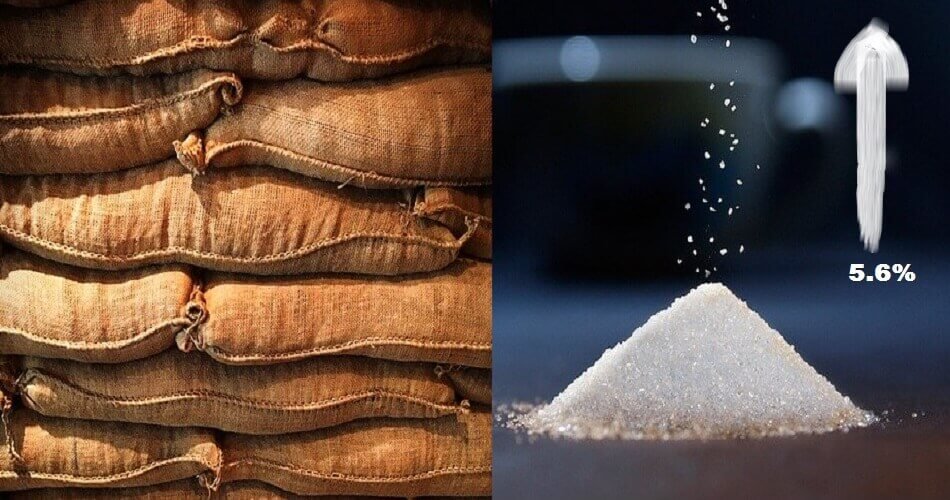According to the Indian Sugar Mills Association (ISMA), India’s progressive year-on-year sugar production in 2021-22 is up by 5.6 percent as of January 31, 2021-22.
As per the ISMA data, on January 31, 2022, 507 sugar mills in the country were in operation and had produced 187.08 lakhs tonnes of sugar, compared to 177.06 lakhs tonnes produced by 491 mills on the same date last season. This is 10.02 lakh tonnes more than the previous season’s production for the same period.
‘Sugar production in Maharashtra is estimated to be 72.90 million tonnes through January 31, 2022, up from 63.80 lakhs tonnes in the same period last year, a 9.10 lakhs tonnes increase. In the current 2021-22 SS, 194 sugar mills are in operation, compared to 182 mills that were in operation last season on January 31, 2021′ ISMA stated in a press release.
In Uttar Pradesh, 120 sugar mills are in operation, and they have produced 50.33 million tonnes of sugar through January 31, 2022, compared to 54.43 million tonnes produced by a similar number of mills on the same date last year. In Karnataka, 72 operational sugar mills produced 38.78 lakh tonnes until January 31, 2022, compared to 34.54 lakh tonnes produced by 66 sugar mills during the same period last year.
‘The sugar industry is pleased to note that the RE for the 2021-22 fiscal year increases the budgetary allocation for the industry by approximately ₹ 2507 crore over the BE (i.e. from approximately ₹ 4337 crore to Rs. 6844 crore), primarily to settle claims of sugar mills under schemes for sugar mill assistance for the 2019-20 season and export assistance for the 2020-21 season. This is a positive decision by the government because almost all of these payments are to be made to sugarcane farmers, which will directly reduce cane price arrears and benefit the farmer community’ ISMA stated.
In order to support the Ethanol Blending Program (EBP), the government has included ₹160 crore in the RE 2021-22 budget and another ₹300 crore in the BE 2022-23 budget for financial assistance to sugar mills for the enhancement and augmentation of ethanol production capacity. Also Read |Govt approved 422 ethanol projects to increase production by 1,675 cr lit
‘This will give a further boost to the establishment of more ethanol distilleries in the country, which will help reduce surplus sugar and also boost ethanol supplies for ethanol blending with petrol to meet the target set by the government, thereby lowering the country’s net oil import bill and also improving air quality,’ according to the release. Aside from the foregoing, the government has decided to levy an additional differential excise duty of ₹ 2 per litre on unblended fuel beginning October 1st, 2022.
According to Department of Revenue notification No. GSR 90(E) dated 1st February 2022, fuel to be classified as blended fuel (with ethanol/ methanol) must conform to BIS specifications from time to time. Because the current blending percentage of ethanol with petrol is 10%, demand and actual offtake from OMCs will increase to ensure that they meet the blended fuel percentage and avoid the additional excise duty of ₹2 per litre on unblended petrol. This will further encourage the government’s Ethanol Blending Program (EBP) and increase offtake.
Meanwhile, OMCs issued the fourth cycle of EOI on January 31, 2022, indicating a requirement for approximately 95 million litres of ethanol for procurement during ESY 2021-22. ‘As can be seen from the quantity required, it appears to have been calculated with 11 percent blending in mind. This is yet another very positive step that will aid in increasing ethanol supplies and diverting more surplus sugar. The deadline for bid submissions is February 4, 2022’ ISMA stated. Also Read | Delay in signing purchase agreements by OMCs, ethanol projects impeding


















Add Comment